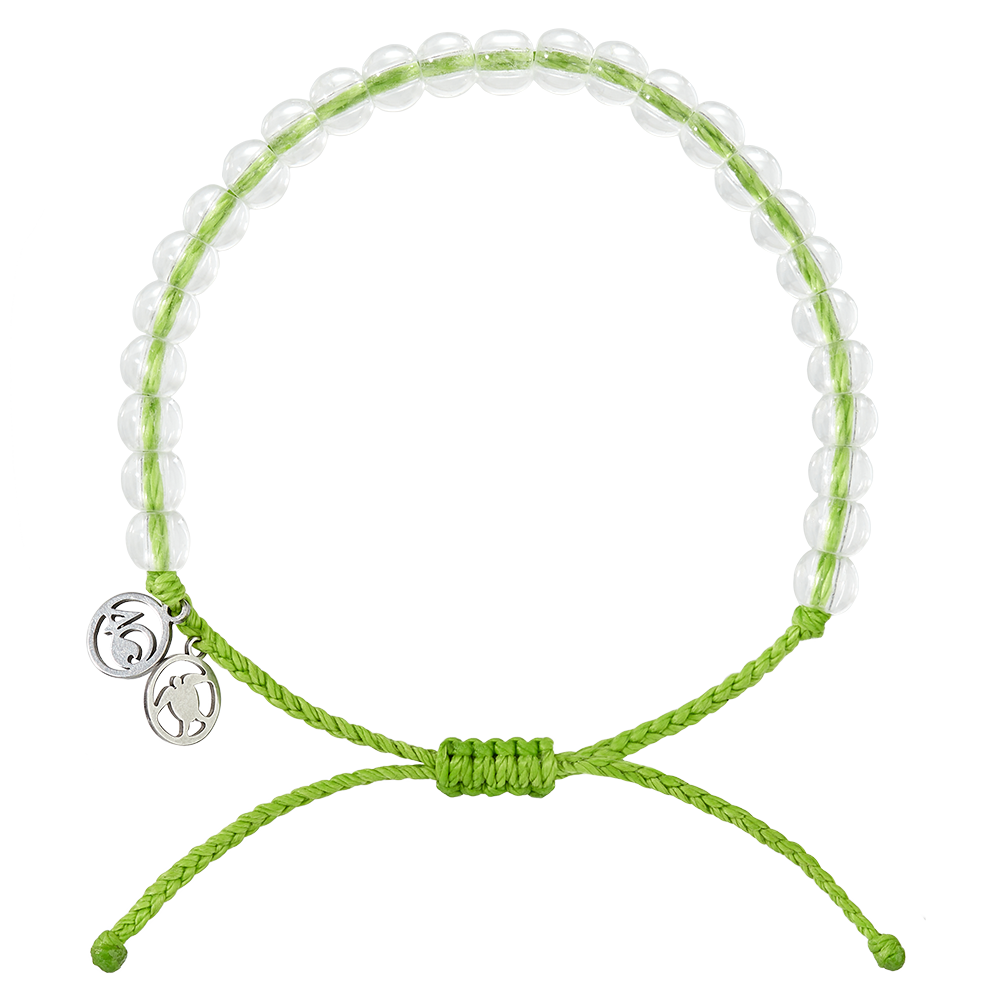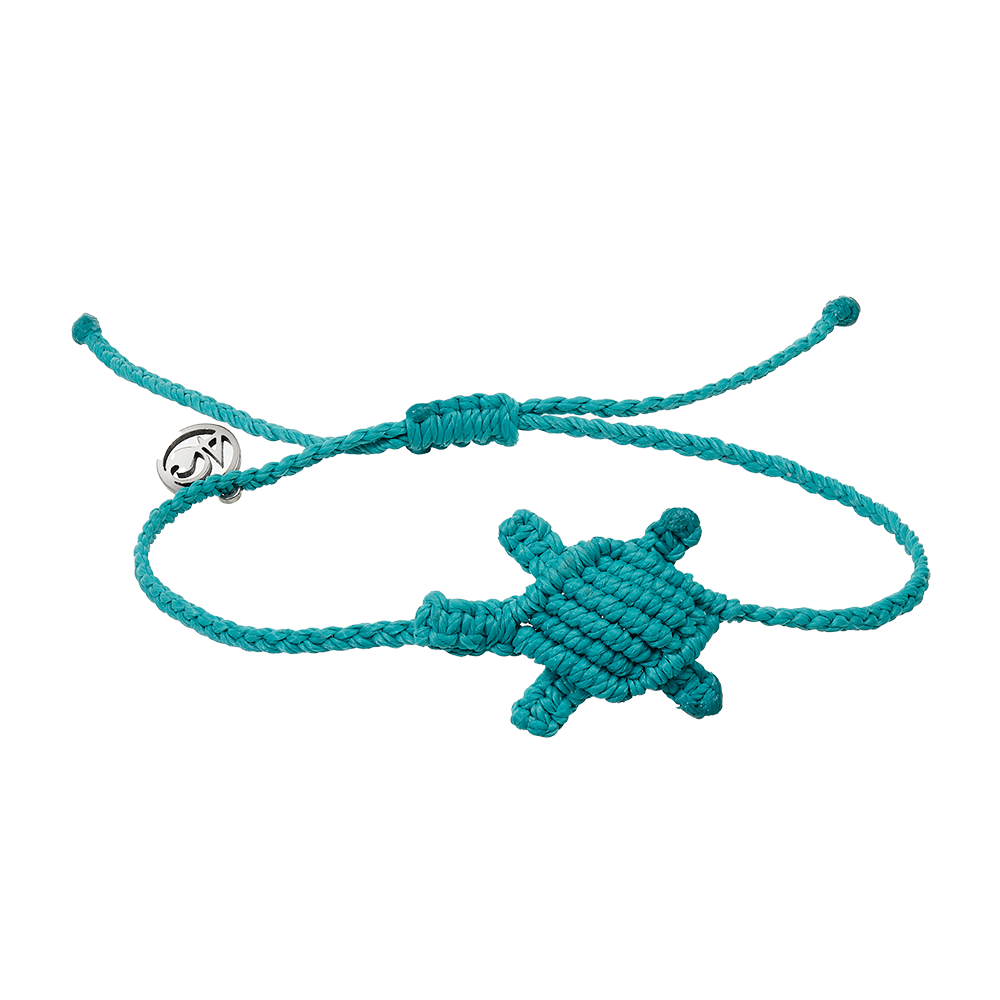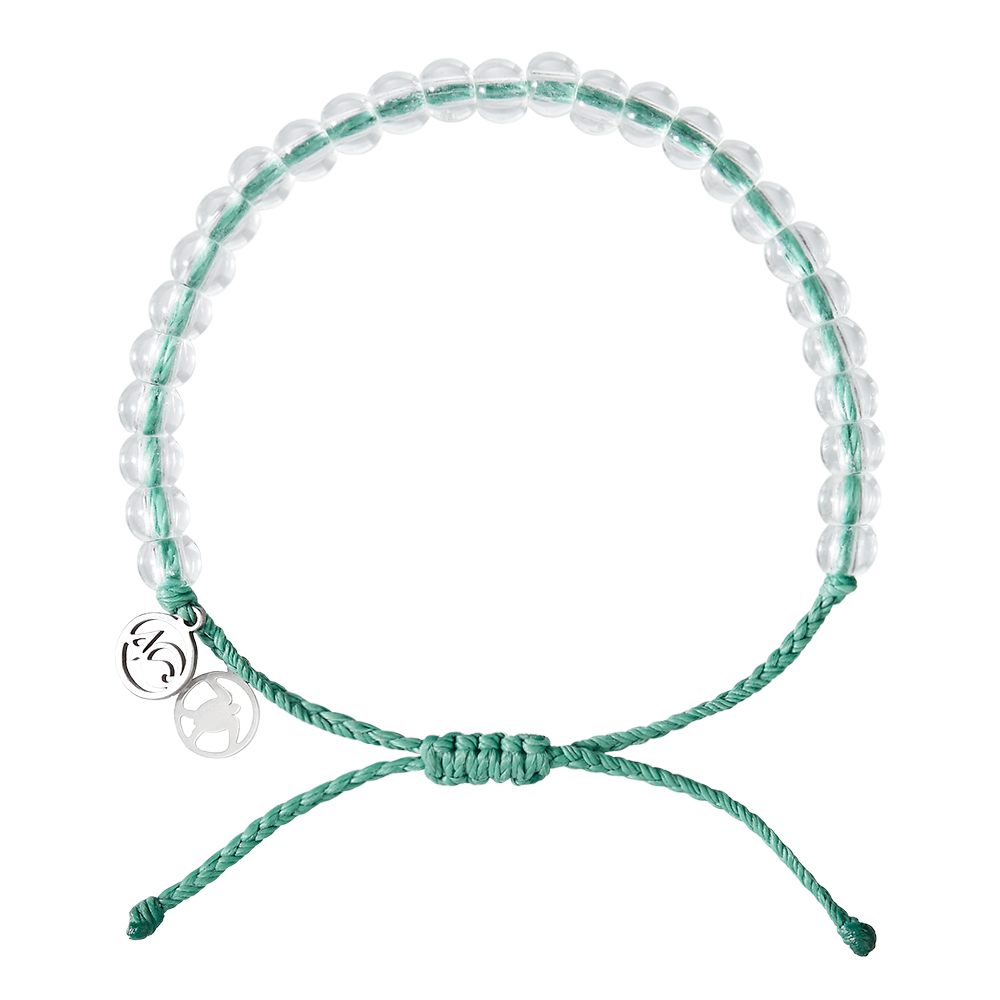5 MIN READ
4-29-2024
Everything You
Need To Know About
Nesting Season!
Mikaela Walsh, 4ocean Research Analyst
Florida! It’s sea turtle nesting season! Learn tips and tricks to help assist these turtles!
Sea turtle nesting season has commenced across the coastlines of Florida. If you live in Florida or are planning a vacation to Florida between March 1st and October 31st, you may encounter a nesting mother or baby sea turtles!
Did you know sea turtles are oviparous marine reptiles that require their newborns to be born from eggs instead of live births? Once the sun has gone down, sea turtles come onto land from the ocean, where they will lay their eggs. They come onto the beach and find an area to start digging with their backflippers. They will dig a deep hole into the sand and lay their eggs from the rear of their body. Once they have finished laying, they will cover the eggs and re-enter the water using their flippers. They will lay roughly one hundred eggs in the sand. Around sixty days after incubating, these hatchlings will emerge from the sand and follow the moon's reflection off the water's surface to enter the sea.
The species of sea turtles that lay nests in Florida:
- Loggerhead Sea Turtle
- Green Sea Turtle
- Leatherback Sea Turtle
- Hawksbill Sea Turtle
- Kemp’s Ridley Sea Turtle
Dive Deeper: Sea Turtles can live up to 100 years!
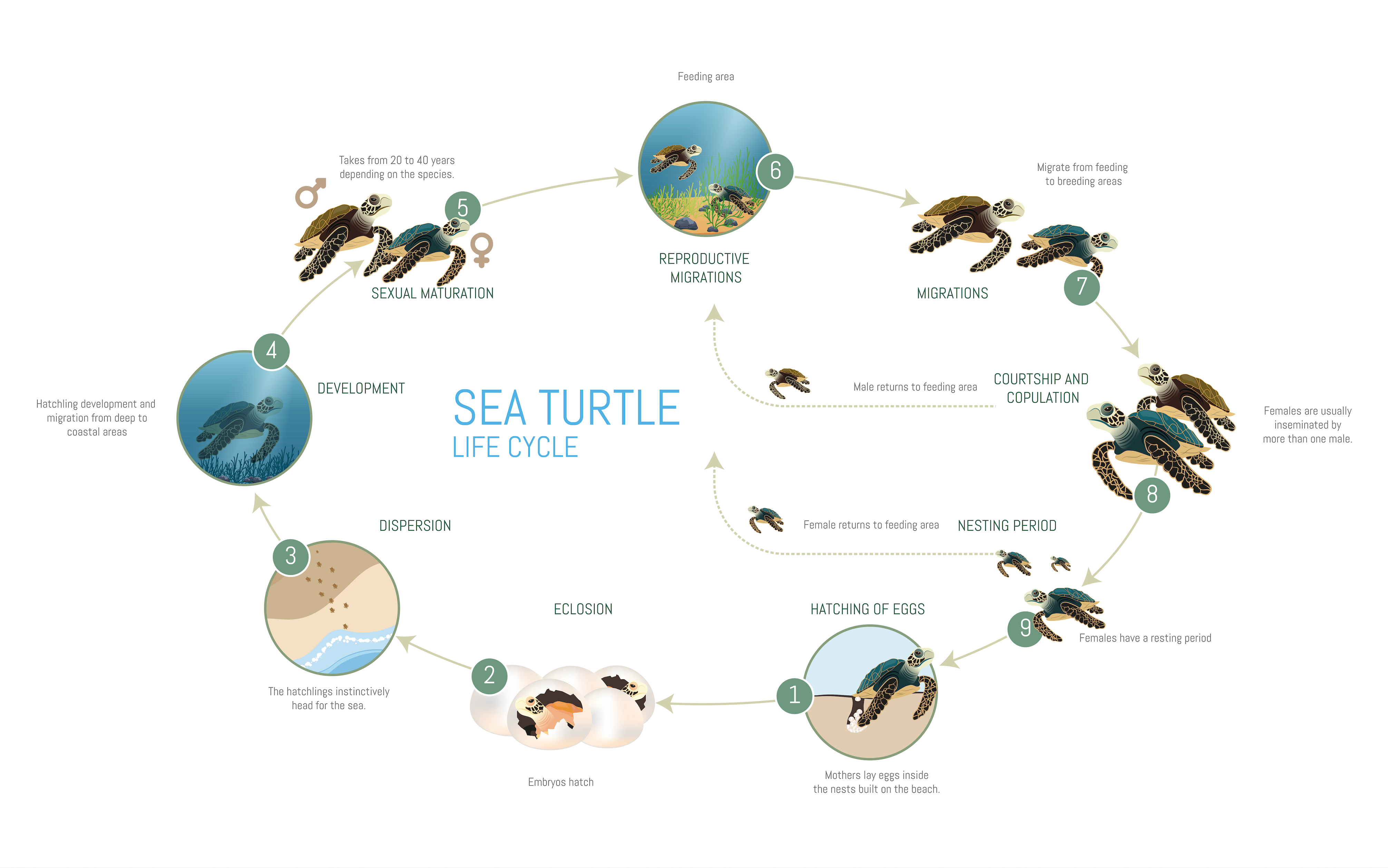
Dive Deeper: Nesting mothers will return to the beach they hatched from to lay their eggs, even after migrating thousands of miles!
Along with nesting comes mating! This is important to address because when turtles are mating, they go to the ocean surface and come closer to land. This leads to many boating strikes for these turtles. Boating strikes are incredibly harmful to this organism because they lead to the loss of limbs, damaged shells, and head injuries. If a turtle is hit by a boat and severely injured, it needs medical treatment as soon as possible. It is essential for boaters to drive slowly during this time through our waterways and wear polarized sunglasses to decrease the number of boat strikes with these animals. As these mating turtles move closer to shore, another issue arises for these gentle swimmers. A hooked turtle refers to a fishing hook swallowed by the turtle that goes down into the turtle's intestines. When this occurs, the turtle has to get the hook surgically removed to ensure it does not cause rips and tears.
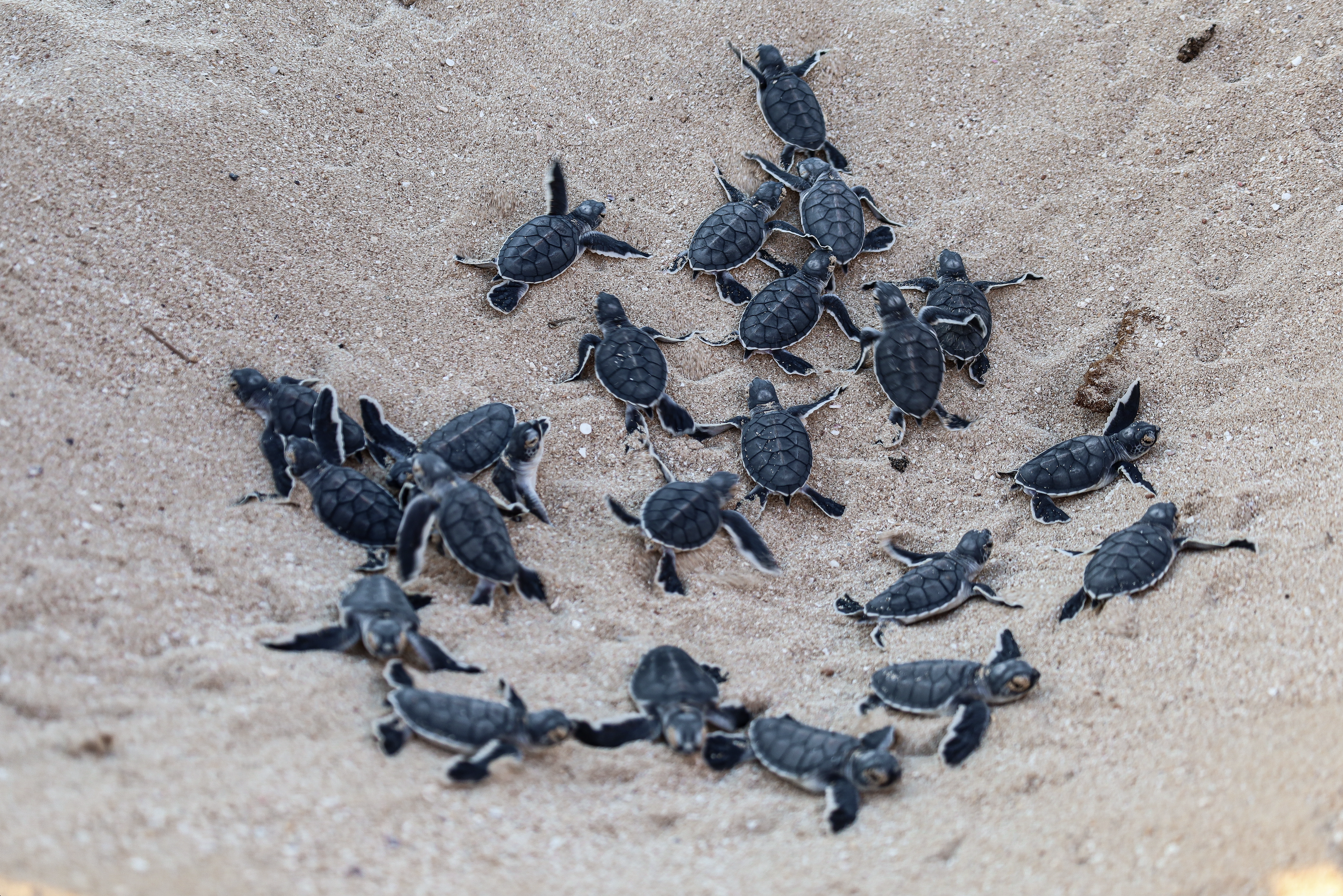
Dive Deeper: Only one in 10,000 hatchlings make it to adulthood according to some estimates
These hatchlings will face many trials upon surviving to adulthood.
Disorientation:
Light pollution causes these hatchlings to crawl towards land instead of the ocean. This allows predators to spot them easily, be unable to eat, and get too hot from the burning sun in the dunes.
Predators:
Hatchlings face many predators on their voyage to the open ocean. These tiny turtles must face birds, crabs, fish, sharks, and other organisms that can eat these turtles. Predators are one of the leading causes of death for these hatchlings.
Pollution:
Hatchlings and young juveniles have various food sources. This allows them to mistake plastic debris for food. Scientists have been blown away by the amount of plastic debris inside washback and juvenile turtles. Plastic debris will break down into minuscule microplastic pieces, allowing baby turtles to eat plastic debris floating in the ocean.
Temperature:
Increasing temperatures of the sand have been causing more females to emerge than males. The gender of the sea turtle is not predetermined and changes based on their incubation temperature. This has raised the attention of scientists and caused great concern about the insufficient number of male turtles being produced.
Entanglements:
Entanglements in abandoned fishing gear and plastic debris are observed across the coastlines. These entanglements can be deadly due to their small size and available energy.
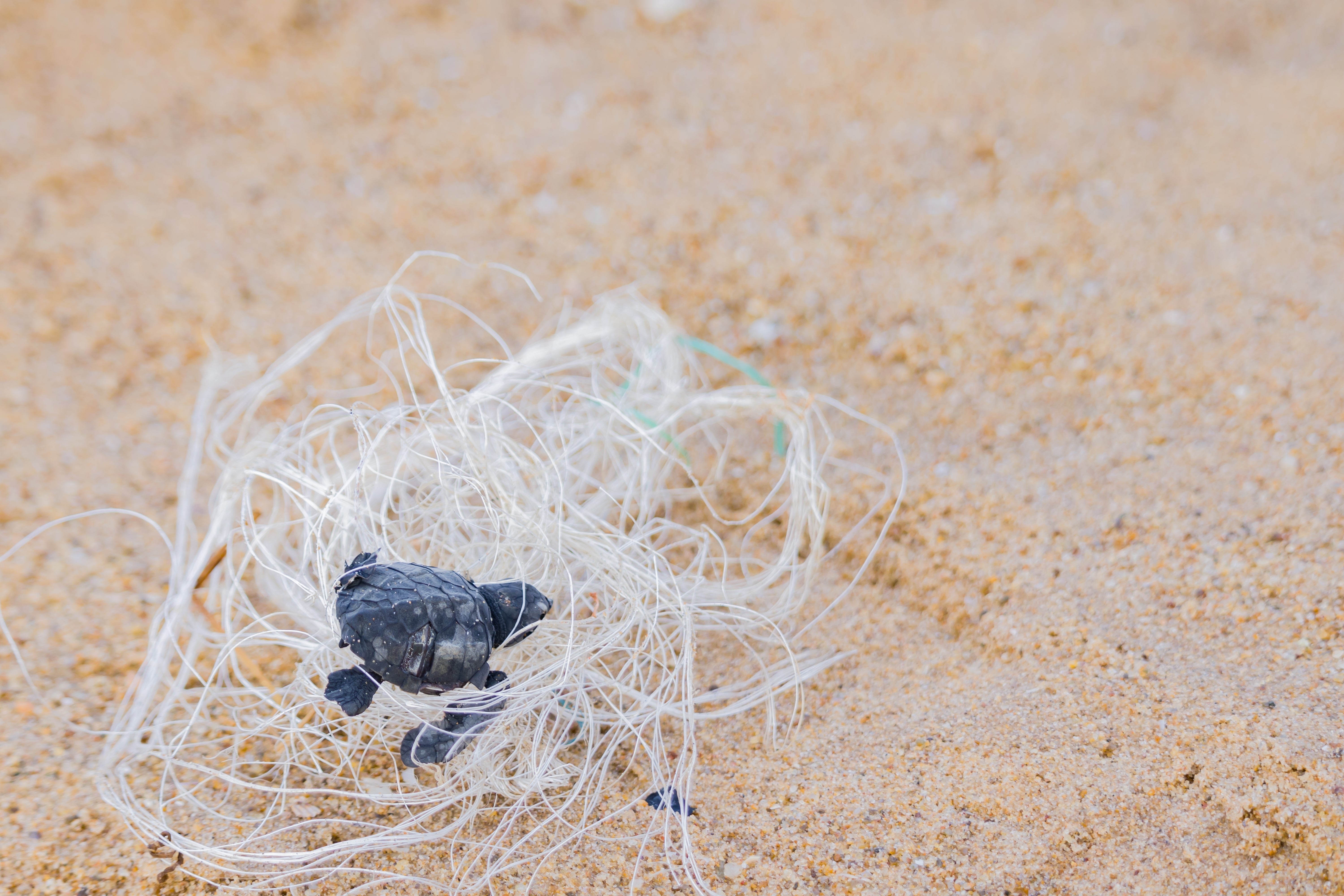
Dive Deeper: The lost years of sea turtles refer to the hatchling stage before they become juveniles! No one knows where these hatchlings mature, so this period is called the ‘lost years.’
Washbacks are baby sea turtles that go out into the sea and return to shore. They are more significant than hatchlings but still tiny compared to juvenile turtles. A hatchling will likely go to sea and seek refuge in sargassum bunches. But these baby turtles will go with them when the wind and ocean currents push the sargassum bunches back to land! A hatchling that returns to the shore after its trip to sea is called a washback. The washback will have used all its energy from the egg, but it is not strong enough to return to the deep ocean. Even though the minuscule turtle is adorable, it is essential to report this incident to FWC and keep your distance. Local rehab facilities will take this turtle into their care to ensure they are strong enough to make the long voyage back to sea.
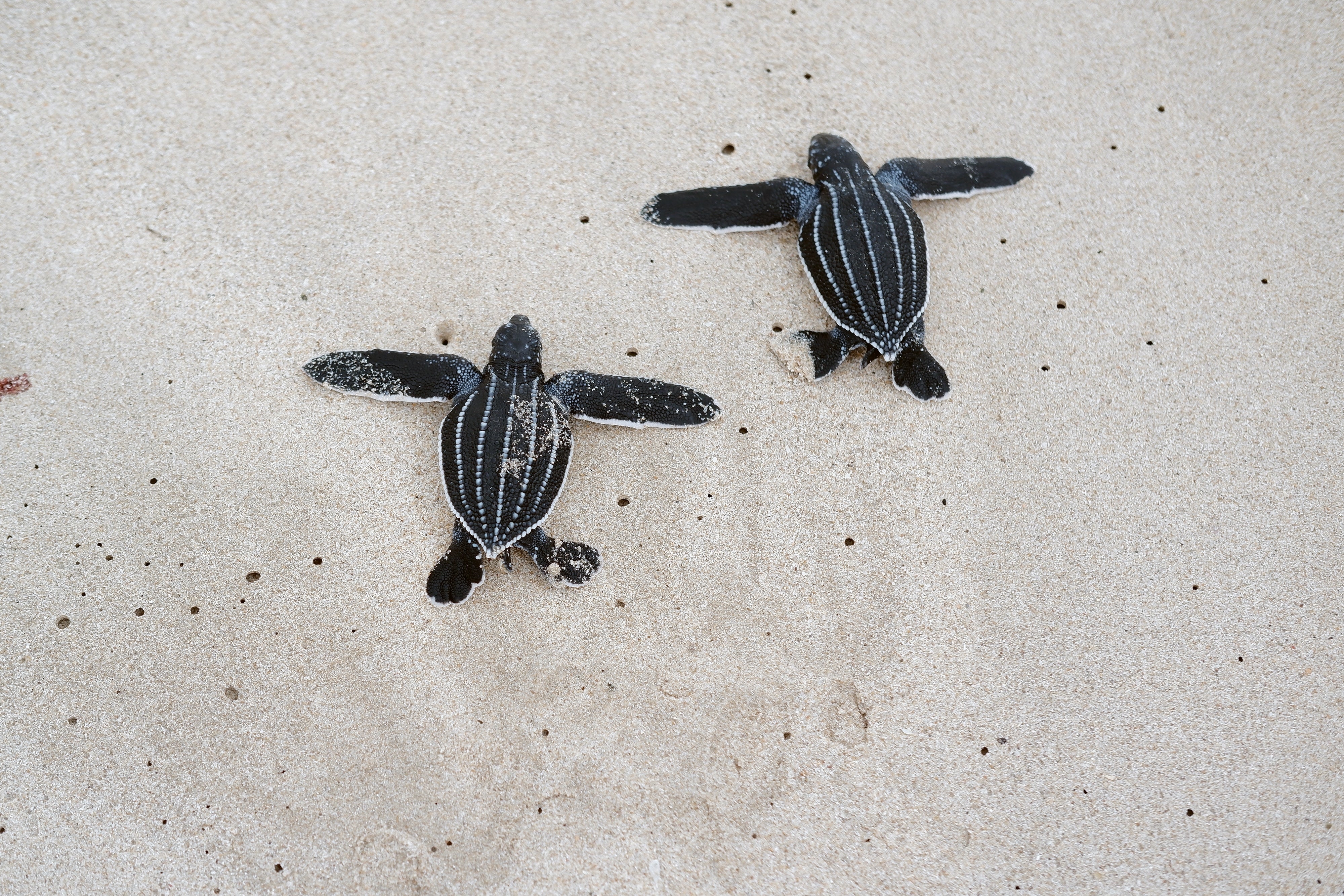
Dive Deeper: Sea turtles are ancient animals roaming the ocean since the age of the dinosaurs, millions of years ago!
Safe ways to go to the beach during this time!
- Keep your distance! If you see a nesting mother come onto the beach, maintain a distance not to frighten her!
- Turn the lights off! Sea turtles can see lights but not the frequency of red lights! Red flashlights are okay to use!
- Don’t make holes and sand castles in the sand! If you do, fill the holes or knock over the sand castles before you leave. If you don’t do this, it can lead to the sea turtle deciding the beach is unsafe for laying eggs, or they can get stuck in the holes.
- Move the beach furniture! Beach furniture can harm nesting mothers and hatchlings because they are immovable structures that get run into and stuck under.
- Keep the beach clean! Make sure to take all your belongings from the beach and leave it cleaner than you found it!
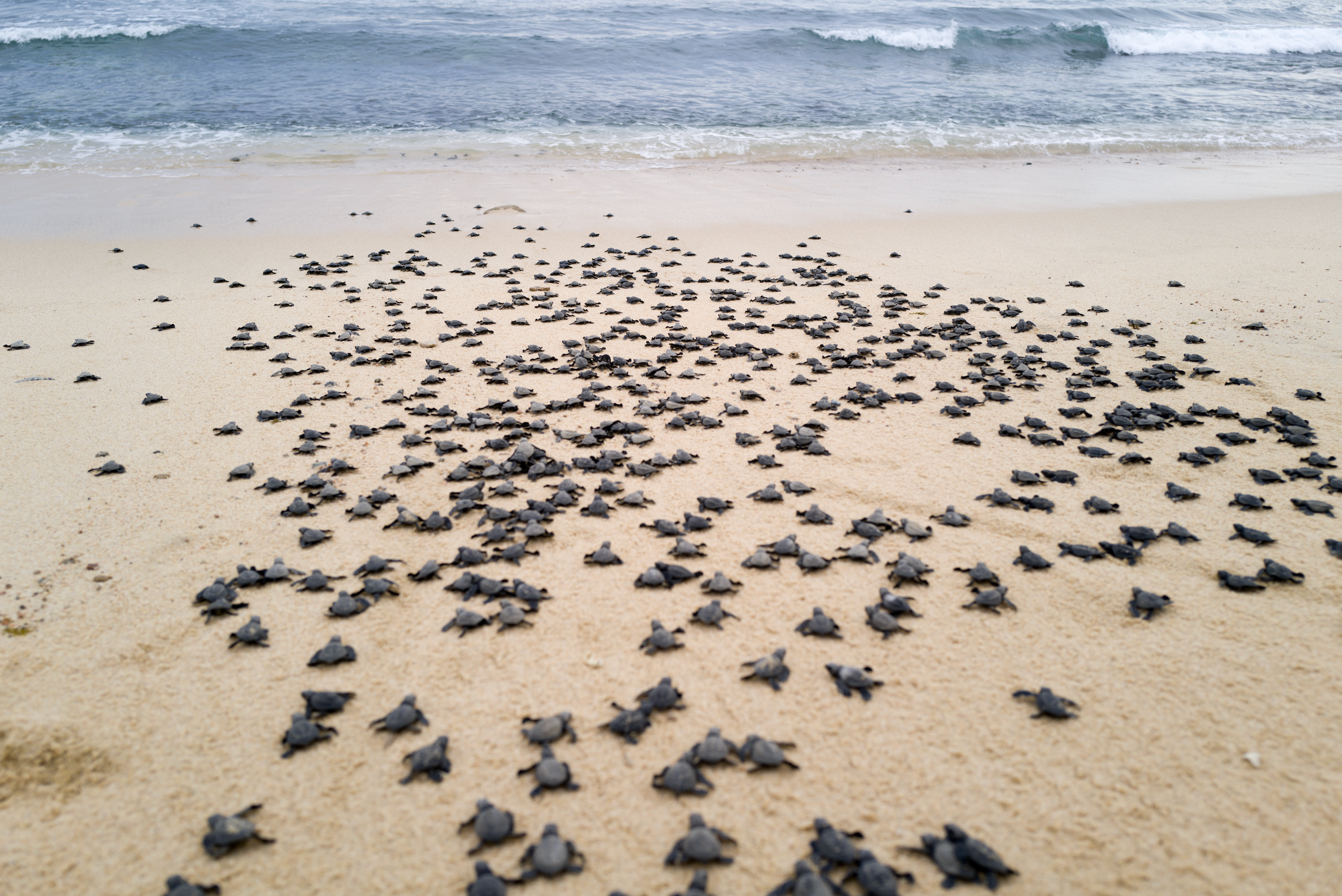
Dive Deeper: Most mothers nest twice a season, but some can nest up to 10 times!
Sea turtle populations are depleting globally, and it is crucial to help these animals. One of the biggest challenges that sea turtles face today is the harmful impact of plastic pollution. Species of sea turtles can live longer than 100 years! They have been around for millions of years! We need to protect these ancient organisms from potential extinction! Sea turtles are rigorously researched because they are one of the few marine organisms that enter onto land but primarily live in ocean waters. These are truly incredible creatures that we must protect. Sea turtles are essential to our ocean. Human inferences and plastic pollution are some of the leading causes of their threat to survival. Help protect these organisms by decreasing single-use plastic consumption and following the tips and tricks of navigating nesting season!
Products You May Like
SEA TURTLE BEADED BRACELET
SEA TURTLE MACRAME BRACELETS
LOGGERHEAD SEA TURTLE BEADED BRACELET
You May Also Like



